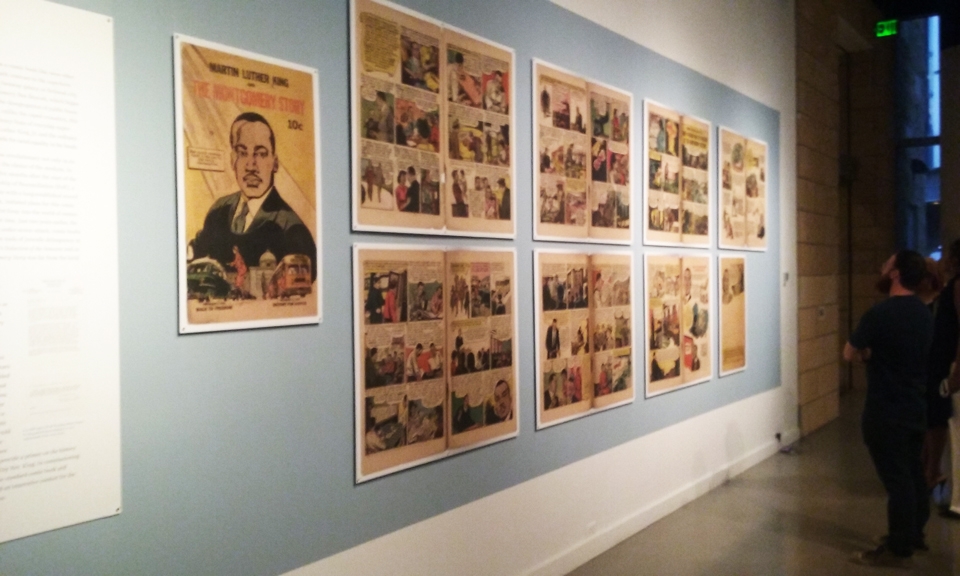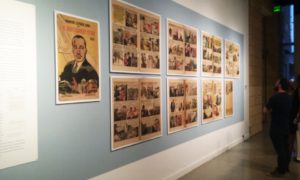

The August Wilson Center featured comics covering several of the civil rights movement’s most important events, such as the Montgomery Bus Boycott, and its most important figures, like Martin Luther King Jr.
By Sean Armstrong | Staff Writer
The Pittsburgh Cultural Trust’s annual Gallery Crawl came and went this past weekend with over thirty exhibits featured this year. The art displayed ranged from sculptures to comics to fashion.
With that in mind, there were several displays that garnered particular interest this year. Ryoji Ikeda, a leading Japanese electronic composer and visual artist, held his display “data.matrix” in the Wood Street Galleries.
Ikeda’s videographic display featured six panels that, when merged together, formed an entirely new image. It’s really a display that needs to be seen to be appreciated. Luckily, this is one of the few displays still available for viewing. It is going to be in Pittsburgh until Dec. 31 in the Wood Street Galleries, located above the Wood Street T station.
Another display, Optic Voices, featured an interactive spin on the usual gallery experience.
The exhibit featured a wide variety of photos showing people holding signs such as “end white privilege,” “I am a human being” and “black lives matter.” Visitors could leave comments online for the photo that affected them the most.
In the exhibit pamphlet, the creator explained that the goal of this interaction was to facilitate a conversation about what is happening in today’s world. The comments and photos from the Gallery Crawl are still online at opticvoices.org.
The conversation that Optic Voices began carried throughout the Gallery Crawl, most recognizably with a ToonSeum presentation of the comic books “MLK” and “March”. ToonSeum had blown up versions of the comic strips that depicted parts of the civil rights movement. First, the civil rights movement is depicted in “MLK” a story beginning with the Montgomery Bus Boycott led by Martin Luther King Jr. Later on is “March,” a trilogy that depicts the life of civil rights leader and activist John Lewis.
A less mentioned, but still important hidden gem at the Gallery Crawl was the Community Supported Art Pittsburgh table. CSAP is a program that helps create commissions for artists in the Pittsburgh area. They had pamphlets and examples of some of the art they had a hand in making at their table. It was worth checking out some of the lesser-known works by local artists.
The Pittsburgh Cultural Trust also brought a science and art mash-up to the Gallery Crawl this year. The Cell Phone Disco was an interactive display created by the Netherlands art collective Information Lab. The display involved an electro magnetic display of participant’s cell phones in order to create an LED display of the group’s cell phone usage. The cell phones go through a processor that translates the usage onto the light screen and in turn makes a one-of-a-kind pattern.
Overall, this year’s Gallery Crawl was a diverse representation of art as a whole. From Ikeda’s “data.matrix” to The Cell Phone Disco, there was an event for everyone. Hopefully, next year’s Gallery Crawl will continue to expand this great Pittsburgh tradition. Until then, all Duquesne students should check out the still remaining galleries.




